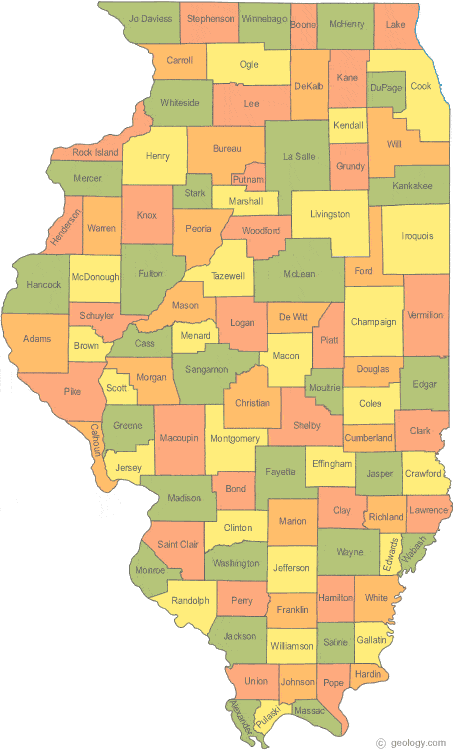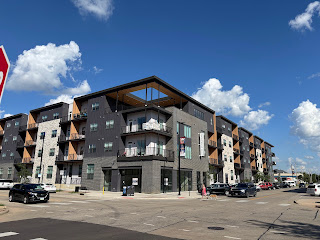 |
| 2015: Steve Sovern promoted a new bridge across the Cedar River |
Your humble blogger has been named to the Advisory Council on my city's and county's Trails and Bikeways Plan! Our first meeting is next Friday morning. I'm not sure what to expect, other than there are more than 30 people on the committee, so we can anticipate a diversity of viewpoints.
A trails and bikeways plan might well be expected to seek more of both trails and bikeways. I submit we can do this most effectively by prioritizing ways, not only of enhancing the experience of cyclists, but of achieving broader community goals. The prophet Jeff Speck, whose book Walkable City: How Downtown Can Save America, One Step at a Time has just been reissued in a 10th anniversary edition [Picador USA, 2022], argued in the first edition that when public policy encourages cycling, it achieves four side benefits (what we academics call "positive externalities):"
- slowing car traffic, making streets safer for everybody
- less land devoted to parking, so more productive
- less pollution and greenhouse gas emissions
- better urban fabric, so more possibility of urban life
1. Look for opportunities for more direct routes. The Cemar Trail, once completed, will enable you to get from downtown Marion to downtown Cedar Rapids more quickly on a bicycle than you can in a car. Bikes aren't always going to be competitive with auto travel for speed, but the closer we can get the more likely people are to try cycle commuting. More like this, please.
2. Look for opportunities in areas of concentrated poverty on the edges of town. Mobile home parks and less-expensive apartment complexes are often found near high-traffic and/or high-speed stroads like Collins Road and Wiley Boulevard. Personal cars can be a money pit, particularly for the economically vulnerable. How can we improve the infrastructure in their neighborhood to make it safer and more encouraging?
3. Look for places that could draw a lot of cycling. The Cedar Rapids Community School District is redoing the whole elementary school array, and has plans to do the same for middle schools. They will have bigger attendance areas than current schools, so more students will be driven, but even so we should definitely make it possible for children to ride safely to school.
4. Connect Coe College to the Cedar Valley Trail. Is this special pleading? Coe (my employer) is close to Cedar Lake as the crow flies, but bikes must take a circuitous route. Coe houses about 1000 young leaders of tomorrow, a concentrated population of potential cyclists.
Existing Infrastructure
1. Convert on-street lanes and sharrows to higher levels of service, where warranted. Sharrows aren't infrastructure anyway, nor are signs on major streets that say "bikes may use full lane." Yes, they may, but few will use the street at all, unless it feels safe.
 |
| The dreaded sharrow: 4th Av & 10th St (Bike lanes end in the 700 block of 4th) |
2. Dedicated fund for maintaining existing infrastructure. Nothing lasts forever. Construction is by definition sexier than maintenance, but neglect of maintenance dooms the whole project.
Removing obstacles
1. Road diets will slow cars and create space for other users. One immediate need: 1st Avenue east of the junction at Williams Boulevard is a major thoroughfare through downtown. Maybe we add a bike lane, maybe we don't, but the key is to slow the cars sufficiently that cycling feels (and is) safe. Slower driving is safer for drivers and their passengers, too.
2. More patrolling of streets will improve everyone's behavior. Enforcement is secondary to design, as any disciple of Strong Towns will tell you, but it's another way to control the speeds, particularly of the biggest and fastest vehicles. However...
2a. Legalize the Idaho stop. While I appreciate the opportunity to rest at stop signs and red lights, less world-weary cyclists should be able to proceed with caution in the absence of cross-traffic.
3. Where the numbers of cyclists warrants, install secure bike sheds rather than relying only on bike racks. More people will ride if they can worry less about theft.
4. E-bike rentals or even giveaways. One study found e-bike riders burn more calories than traditional riders like me, because they ride farther and more frequently.
5. Fund an extensive survey of public attitudes about cycling, so we're not relying on comments of convenience or passion. Even the active cyclists on this committee have some limitations on their perspectives.
Other public policy
1. Event planning, coordinated with management of the new apartments and condo units in core areas of the city. Don't just hope for good results from infill, prime the pump of potential cyclists. All the new infrastructure creates the potential for walkable/bikeable streets, but we only see the benefits of cycling and walking if people do them.
 |
| Start of construction of the Banjo Block last summer: 184 new apartments downtown |
2. Legalize ADUs and missing middle housing. We'd have a more bikeable city with more density, because density equals destinations to bike (and walk) to. Just because our terrain is flat is no reason we have to sprawl all over it. And while we're at it...
3. Adopt a land value tax. This is my latest obsession, but by gum, we'd have a more bikeable city with more urban life if we could fill in the empty parts of the core areas where the clods are land banking.
SEE ALSO: "Why I Pedecommute (and Pedal-Commute)," 6 April 2021 [or check the posts linked under "bicycles" in the labels column on the right side of your screen]
Alec Davis, "How I Learned to Be Vulnerable," Waste of Space, 20 February 2023
Charles Marohn's interview with Jeff Speck on the Strong Towns podcast is here.













